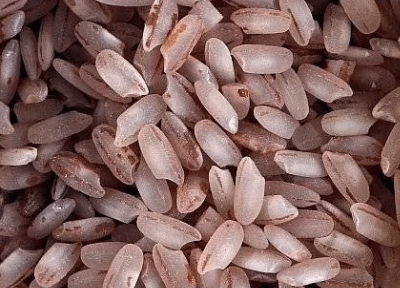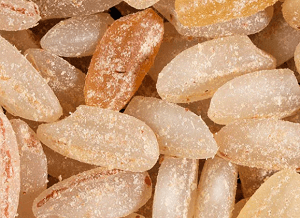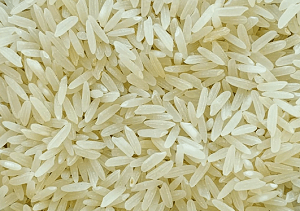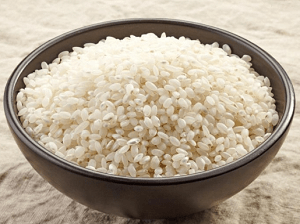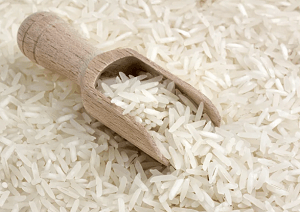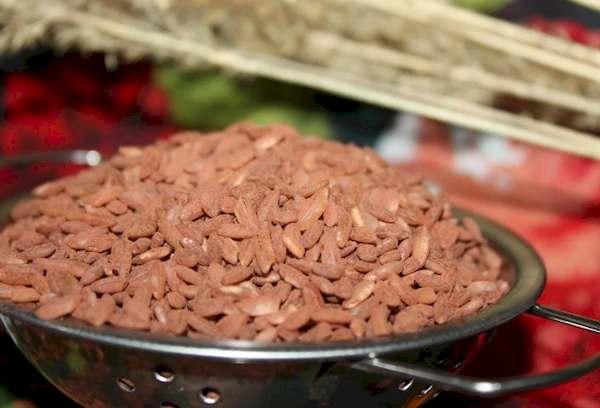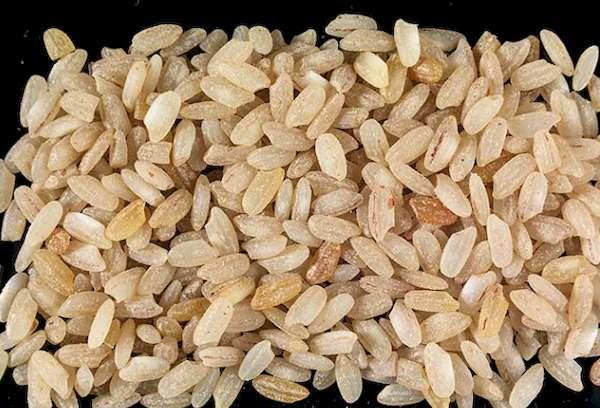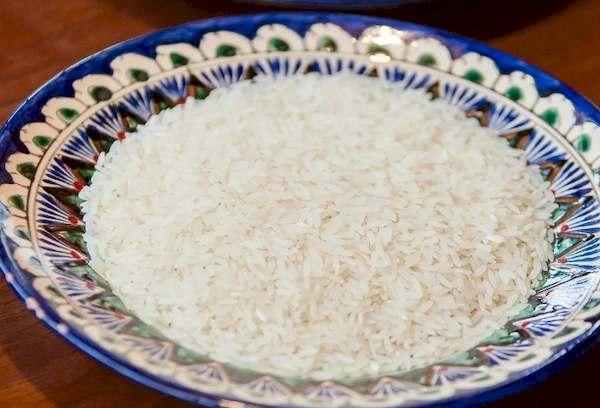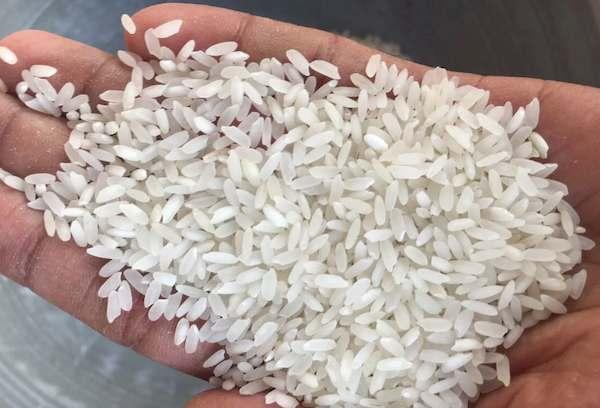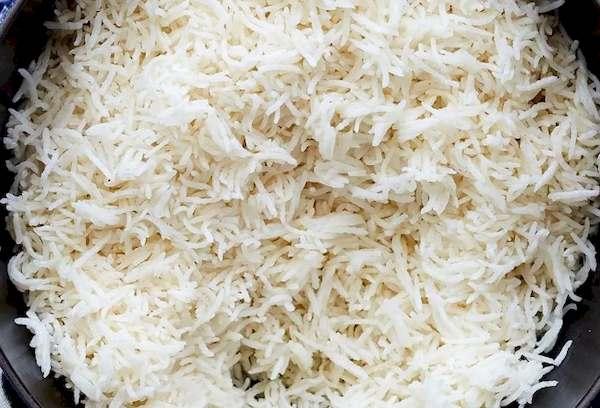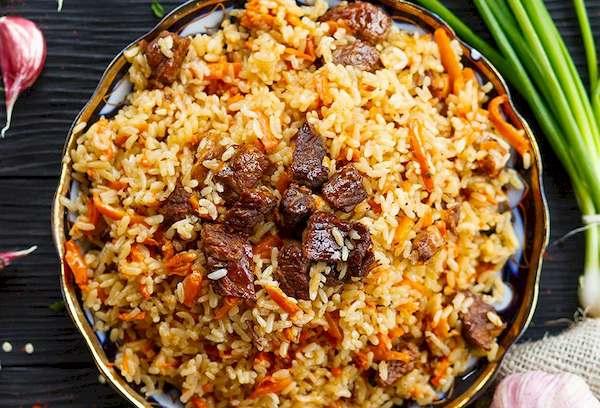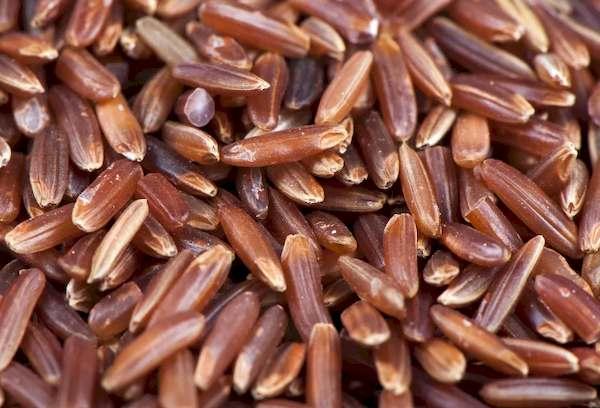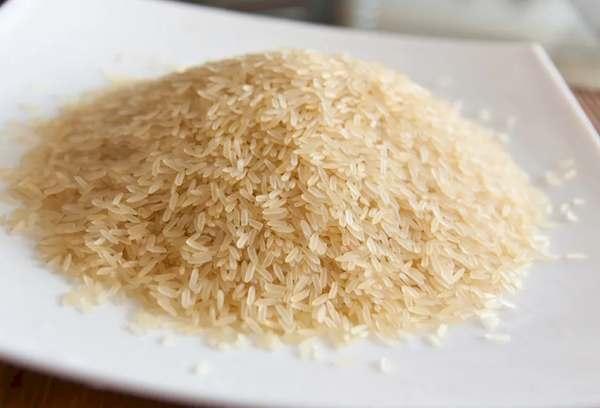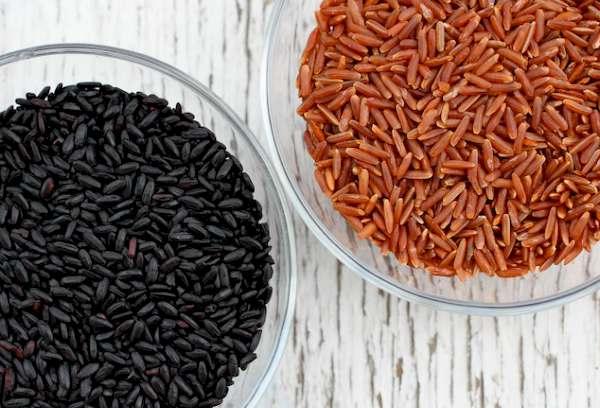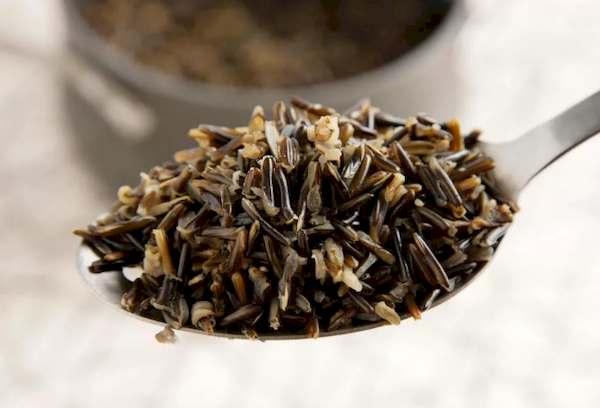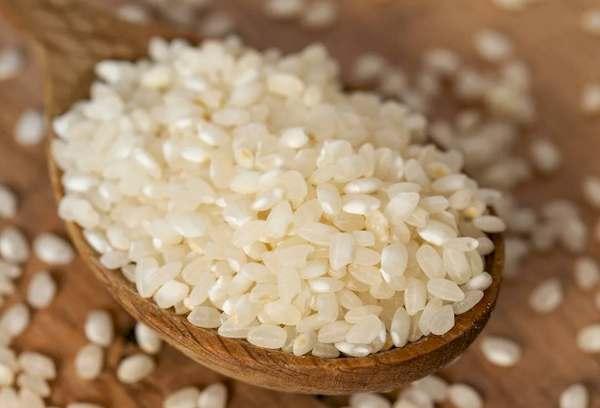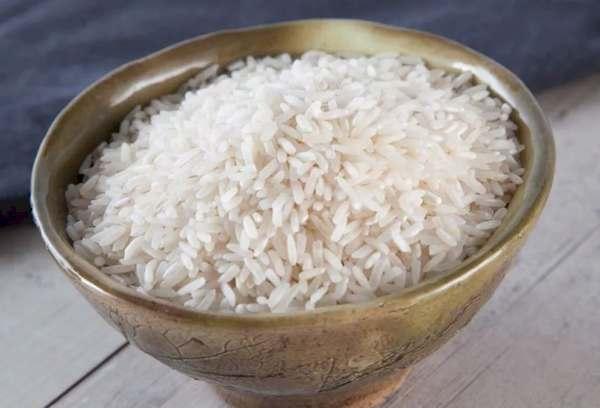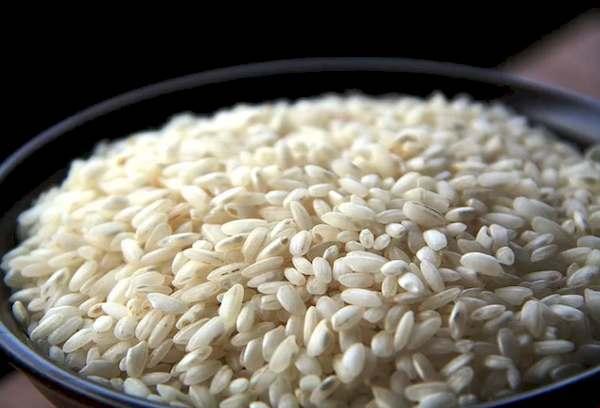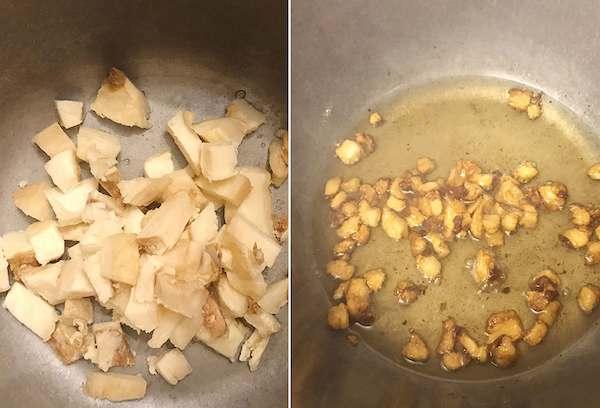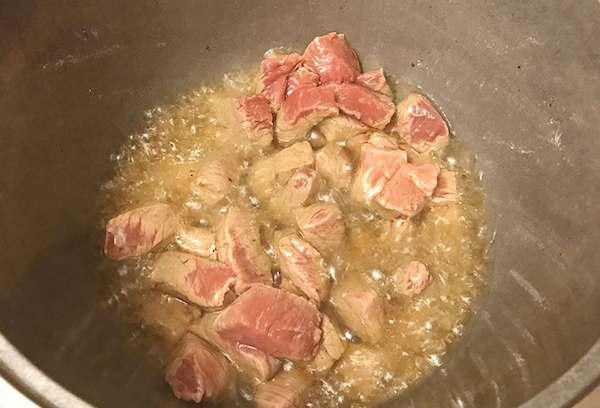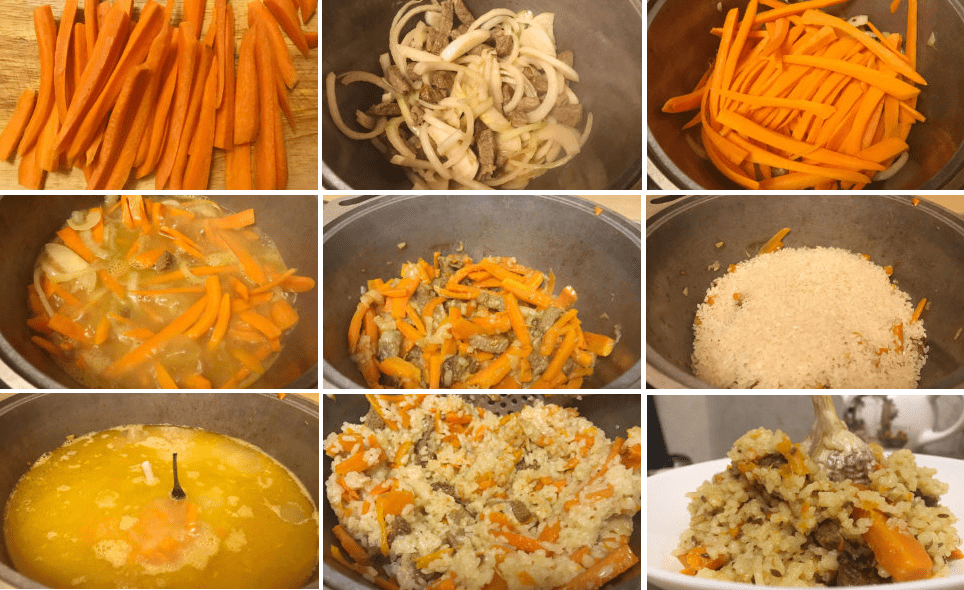Is it better to buy TOP 5 varieties of rice for pilaf in a supermarket so that the taste will please you and not disappoint you?
Content:
Traditionally, pilaf is an Uzbek dish, and the answer to the question of which rice is best for pilaf is obvious – Uzbek. Basically, Uzbeks use the following types for its preparation: Chungara, Devzira, Laser. They are not very common in Russia. You won't find special cereals in small towns or shops. Therefore, many people use any other long-grain rice or, at worst, steamed rice instead of Uzbek rice.
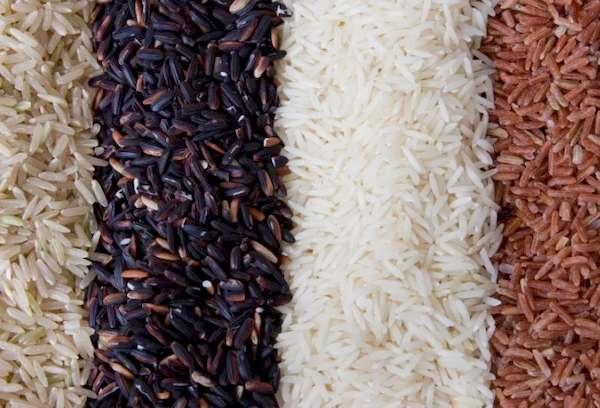
What kind of rice is needed for pilaf?
The good taste and appetizing appearance of pilaf largely depend on the right set of ingredients. Carrots are considered the soul of the dish, and fresh meat and rice are the guarantor of juiciness and satiety.
What kind of rice should be in pilaf - the main selection criteria:
- Pure cereal with whole grains, not expired.
- Firm rice with low starch content.
- Increasing in size by 3-5 or more times.
- Retains its shape during long-term cooking.
Top 5 types of rice for pilaf
There is an opinion that long grain rice is best suited for pilaf.Many people do not know, but there are a large number of long-grain varieties - Uzbek, Indian. Wild rice has long grains (which, in fact, is not rice), but it is not used for pilaf. In order not to get confused and choose the right rice, we recommend focusing on the rating table.
| The best varieties of rice for pilaf | ||||
| Name | Bean type | Color | Taste | Features of use |
| Devzira
|
Large, long, heavy | Pink to dark brown, with a stripe down the center | Unique, rich, slightly sweet | Rinse thoroughly and soak in cold water for at least 1 hour. Rinse with running water. |
| Chungara
|
Long and heavy | Pearl and amber with brown inclusions | Rich, slightly spicy and slightly sweet | |
| Laser
|
Long | White, slightly transparent | Good, rice | Rinse until clean and soak in warm salted water for half an hour. |
| Alanga
|
Round | Whitish, transparent pearl | Subtle, neutral | It is necessary to thoroughly rinse the cereal and add a small amount of cold water (salted) immediately before you start preparing zirvak for pilaf. |
| Basmati
|
Small, very long and thin | White-cream, translucent | Versatile, fine walnut | The cereal must be washed 3-4 times. There is no need to soak the grain before adding it to pilaf. Cooking time is 20 minutes. |
Note! Many manufacturers designate suitable rice as “for pilaf.” However, different packages may contain different varieties.
Devzira
One of the most ancient varieties of Uzbek pilaf rice is Devzira. Historical information about it appears in the 3-4 millennium BC. Devzira is grown in the Fergana Valley.Its grains have a low yield, so its price is far from budget.
This variety is valued for its extraordinary beauty and subtle, barely noticeable sweet taste in dishes.
- The grains of Devzira rice are long, quite large, with a longitudinal dark stripe in the center. They can be of different shades - pinkish, dark brown, reddish. After washing they acquire a pearly amber color.
- It increases in size much more than regular rice - as much as 7 times. Accordingly, it absorbs aromatic water with meat fat and spices better than other types.
- Devzira is fermented before use. The cereal is stored in bags in a dark place and watered from time to time. It is believed that the older she is, the more valuable she is. Devzira can be stored for up to 5 years.
Advice. Devzira is often counterfeited by covering it with dye or brick dust. To determine the authenticity of the variety, you need to take some grains of rice in the palm of your hand and rub them. The real Devzira does not stain her hands.
Chungara
Devzira rice is quite expensive, so it is often replaced in pilaf with the equally wonderful Uzbek rice Chungara. It costs less, but absorbs zirvak just as well.
Peculiarities
- Chungara is a light, almost white long grain rice.
- Its grains are hard and contain a little starch.
- After cooking, it is very elastic, round-sided and long.
Laser
A variety of long grain rice historically grown in Kharezm. The laser is characterized by a transparent white grain.
It contains a little starch, but holds its shape perfectly:
- Doesn't crumble.
- It cooks quite quickly.
- Leaves the taste of rice in the pilaf, and does not increase in volume too much (the zirvak absorbs averagely).
Alanga
Relatively inexpensive Uzbek rice grown in the Khorezm region. It is distinguished by the round shape of the grains.They are quite large and expand 2-3 times when cooked.
Peculiarities:
- Alanga perfectly absorbs the aromas and taste of pilaf.
- Does not become sticky, crumbly after cooking.
Alang rice is very difficult to buy in Russia.
Basmati
It is the most popular long grain rice in the world. He is also called the "king". Basmati is grown in India and Pakistan, and its name means “fragrant” in Hindi.
Peculiarities:
- When cooked, it increases in length, but the thickness of the grains remains virtually unchanged.
- It remains very crumbly, even somewhat dry.
- The easiest to digest, has a low glycemic index.
Review of rice for pilaf - which rice is suitable and which is not?
There are a huge number of pilaf recipes. Despite the fact that the dish is Uzbek, it is prepared far beyond the borders of Uzbekistan, and often from completely affordable ordinary rice, with pork and poultry (which are not used in traditional pilaf). This is not to say that pilaf with plain rice is not tasty. Tastes vary from person to person. You need to take what you like: round, long, steamed rice. But you should take into account the characteristics of each cereal.
Brown
Unprocessed rice is dark in color. The grain is covered with a brown bran shell and shala - a hard yellow husk. But brown rice is usually called rice that has undergone minimal exfoliating treatment.
The leftover husk found in brown rice contains beneficial micronutrients, including iodine. In particular, this is why it has a characteristic taste.
Brown rice has nutty notes. It is very hard, holds its shape perfectly, and does not boil into mush. Cooking time is 25-30 minutes. You can use the cereal for crumbly healthy pilaf.In Asian countries, brown rice is eaten by children and the elderly, and in Europe by supporters of a healthy diet. But when buying it, you should always pay attention to the expiration date on the packaging. Due to the bran content, the product quickly deteriorates.
Brown rice is often long grain or medium grain. Its color indicates only the processing method, and is not a sign of a specific variety.
Steamed
To understand whether steamed rice is suitable for making pilaf, you need to look not at the processing method, but at the variety. Steamed rice can be short-grain, long-grain, or, in fact, any kind. Steaming is used to improve the quality of rice grains.
Unhulled soaked grain is treated with hot steam under pressure, then dried and ground. But due to steam exposure, it no longer loses useful substances. Some of the vitamins and minerals from the pityriasis shell pass into the cereal.
Parboiled rice is more transparent and has a yellowish tint when raw. It is not as brittle and less overcooked than white rice.
Parboiled rice is more fluffy than unparboiled rice. Pilaf is often made with it. Moreover, they use not only long-grain cereals, but also round ones. The average cooking time is 20-25 minutes.
During the cooking process, the grains of parboiled rice turn white. For a beautiful color of pilaf you need to use additional ingredients.
Black and red rice
They belong to the exotic types of rice. They are firm and contain a lot of fiber. Black and red rice are more often used to make salads. Despite the fact that the grains are not boiled into porridge, these varieties cannot be called suitable for traditional pilaf. But they may be suitable for experimenters.
You just need to take into account that:
- Chinese Nanjing Black Rice has a grassy flavor.
- Thai black rice has a sticky texture and is neutral in taste.
- Red rice comes from Thailand. It is the hardest, cooks for 45 minutes, and has a light rye bread aroma.
Wild
It is an aquatic perennial grass that grows in North America.
Wild rice contains many more nutrients and vitamins than cultivated varieties. But it is not suitable for cooking pilaf.
It is very hard, cooks for 45 minutes after pre-soaking for 2-3 hours. At the same time, grains do not absorb aromas and flavors well. You can use wild rice for pilaf only in combination with other varieties (for benefit and original appearance).
Round grain
Round varieties of rice contain a lot of starch. They are sticky, boil well and quickly. Most often on the shelves of shops and supermarkets you can see:
- Krasnodar round grain rice. The most common and popular rice in Russia. It is suitable for preparing milk porridges, casseroles, and soups. During the cooking process it becomes sticky, soft, and puree-like.
- Japan. Designed for preparing rolls and sushi. Differs in larger grains. Japonica does not get soft and retains its shape well when cooked, but it is very sticky.
Round types of rice are least suitable for making pilaf. The exception is Alang rice.
Long grain
All long-grain rice varieties are distinguished by their elasticity and friability. They are considered the most suitable for preparing pilaf.
What types of long rice are there, and what are their features:
- Jasmine rice gets its name from its unusual aroma, reminiscent of blooming jasmine. To preserve it, it is recommended to steam the cereal rather than boil it.The cooked rice will stick together a little.
- Polished. During the grinding process, the grains become white, but can break. Damaged cereals are more prone to overcooking, but still remain quite crumbly.
- Unpolished. Same as brown rice. It is also called brown and golden.
Other long-grain types of rice (Basmati, Devzira, Laser, Chungara) were discussed above. If you ask pilaf gourmets which variety is the best, they will list these varieties. When asked whether Jasmine rice is suitable for pilaf or not, they will answer in the negative. But that doesn't mean you can't use it. The pilaf will be crumbly, but soft and slightly sticky.
Medium grain
Medium grain rice varieties are very different. They are elongated and round. Most often they are used to prepare risotto, paella and desserts.
A feature of medium grain rice is its ability to absorb aromas and flavors well. At the same time, it can keep its shape and not boil over.
Medium-grain types of rice can theoretically be used to prepare pilaf. The dish will turn out very tender. If you have doubts whether Camolino, Carnaroli, Arborio rice is suitable for a dish or not, you need to find out more about them.
- Arborio. Famous for risotto. It increases greatly during cooking, but does not turn into porridge (if you do not disturb it during cooking and do not overcook it).
- Carnaroli is the most prestigious variety of Italian rice. It is longer and firmer than Arborio, contains more starch, but is less sticky.
- Camolino is grown on the banks of the Nile, and thanks to processing with vegetable oil it becomes like pearls.It is often called round rice, but when cooked, the grains elongate, and it behaves in much the same way as medium-grain varieties: it swells well, slightly sticks together, and holds its shape.
- Premium (Crimea). It has a yellow, translucent grain. Quite dry after cooking and crumbly. By itself it is almost tasteless.
Subtleties of cooking pilaf
It’s not enough to know what kind of rice to make pilaf from. There are many subtleties in preparing the dish:
- For juiciness, instead of vegetable oil, rendered fat from the tail is used.
- For even cooking you need a large cauldron with thick walls. The ingredients do not burn in it and are well fried. A good cauldron is especially important when cooking pilaf over a fire.
- Carrots for pilaf are cut into thick strips so that they do not fall apart and turn into mush.
- Zirvak is the basis for pilaf, consisting of stewed carrots, onions, meat, water, salt and spices. The ingredients are first fried over high heat and then stewed in a cauldron.
- In order for the rice to be well soaked, but at the same time remain crumbly, the zirvak must remain transparent (the greasy film on the surface does not count). To do this, after adding water, reduce the heat to minimum.
- Pilaf gets its beautiful color due to the abundance of carrots. It should be taken in equal quantities with meat and rice. A yellow tint also appears if you add turmeric and sumac spice to pilaf.
- When the zirvak is ready, add rice. The liquid should cover it by 2 fingers.
- Stirring pilaf during cooking is strictly prohibited! Just cover it with a lid.
- Garlic and hot pepper added after turning off the heat give the pilaf a unique taste. Without cutting them, they are buried in the rice and the dish is left under the lid for another 15 minutes.
Advice.If you don’t have thick-walled dishes, try cooking pilaf in a slow cooker. The result will be pleasantly surprising.
Questions and answers
How to cook pilaf with regular round rice?
If there is no other rice other than round rice, and you really want to cook pilaf, you should rinse the grains very thoroughly to get rid of excess starch. You can additionally dry the rice and then fry it in a frying pan in vegetable oil (so that it becomes crumbly). It should be taken into account that round cereals boil quickly. To prevent the grains from falling apart after adding rice, cook the pilaf for no longer than 10-15 minutes, without covering it with a lid. You can cover the dish after the heat is turned off so that the grains are ready and well saturated with flavors and aromas.
What can replace rice in pilaf?
Bulgur or pearl barley.
“Real pilaf is pilaf made from Devzira rice,” say the Uzbeks. It's hard to disagree with them. Having tried this pilaf at least once, you want to eat it and cook it again and again. But often Devzira has to be replaced with other varieties. Now you know which types of rice are suitable for pilaf and which are not.
